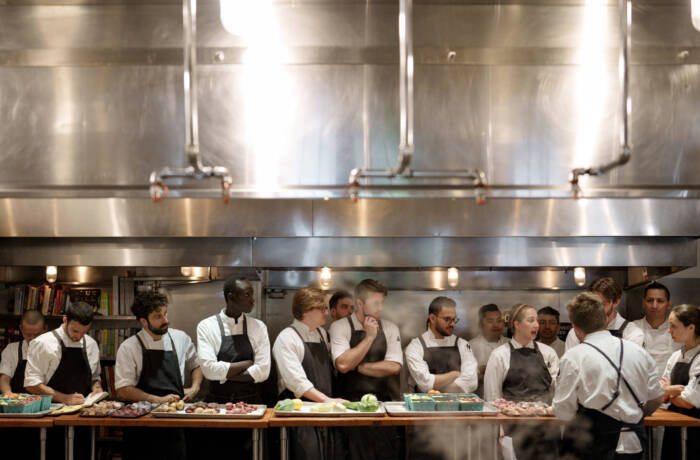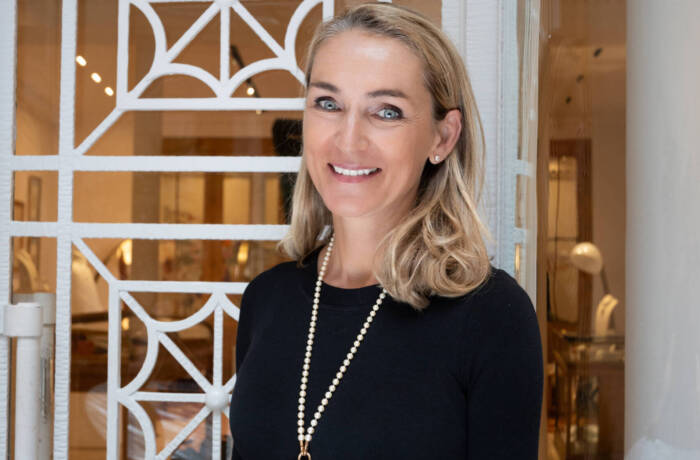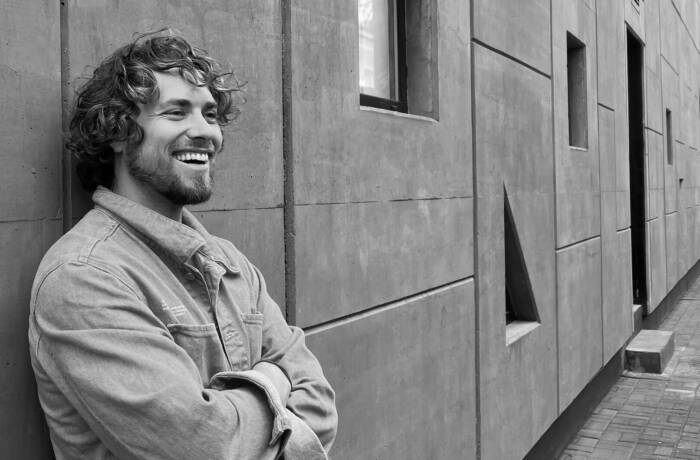
Kelly Russell Catella
For International Women’s Day we are spotlighting Kelly Russell Catella, Head of Sustainability and Communication at COIMA, a major Italian real estate fund manager. COIMA has total investments of 5.5 billion euros with a declared focus on large scale sustainable urban planning. Here, Catella speaks with Samantha Welsh about making cities vibrant, accessible and healthy for all and the importance of an environmentally conscious city for a community
LUX: How did you start your journey on driving better approaches to sustainability in city-making?
Kelly Russell Catella: COIMA has always been very focused on quality and sustainable development since it was founded nearly 50 years ago. My own professional journey in the industry first started coordinating the first Italian Urban Land Institute chapter in Italy until our family established in the Fondazione Riccardo Catella in 2005. The Foundation is a not-for-profit institution with the mission to improve the quality of urban life and promote the culture of sustainability in cities. Since then, I’ve also been responsible for leading sustainability at COIMA, which is a value we truly believe in and is integrated deeply in the process of our value creation for all stakeholders.
One of our most important projects is Porta Nuova in Milan, one of the largest urban regeneration projects to have taken shape in Europe. Last year it became the first urban neighbourhood in the world to achieve both the LEED and WELL certifications for Community. These are the leading global certifications related to sustainability, health and wellbeing of buildings and communities. Achieving this ‘world first’ was for us a real endorsement of our approach, which is about focusing on the long-term sustainability of the entire neighbourhood, not just specific buildings. We find it key to think about the place, the whole community, and how the transformation fits into the context of the needs of the wider city.
LUX: Why was pursuing LEED and WELL certification for Porta Nuova so important?
KRC: Creating more liveable, healthy communities and places where people are in contact with nature, culture and beauty is what really drives our daily effort. Achieving the LEED and WELL for Community ratings for Porta Nuova is a validation that we worked to deliver on our promise to create a genuinely sustainable community in a measurable way. It is also about constantly challenging ourselves to do more, to push the bar higher and set new benchmarks in the industry.
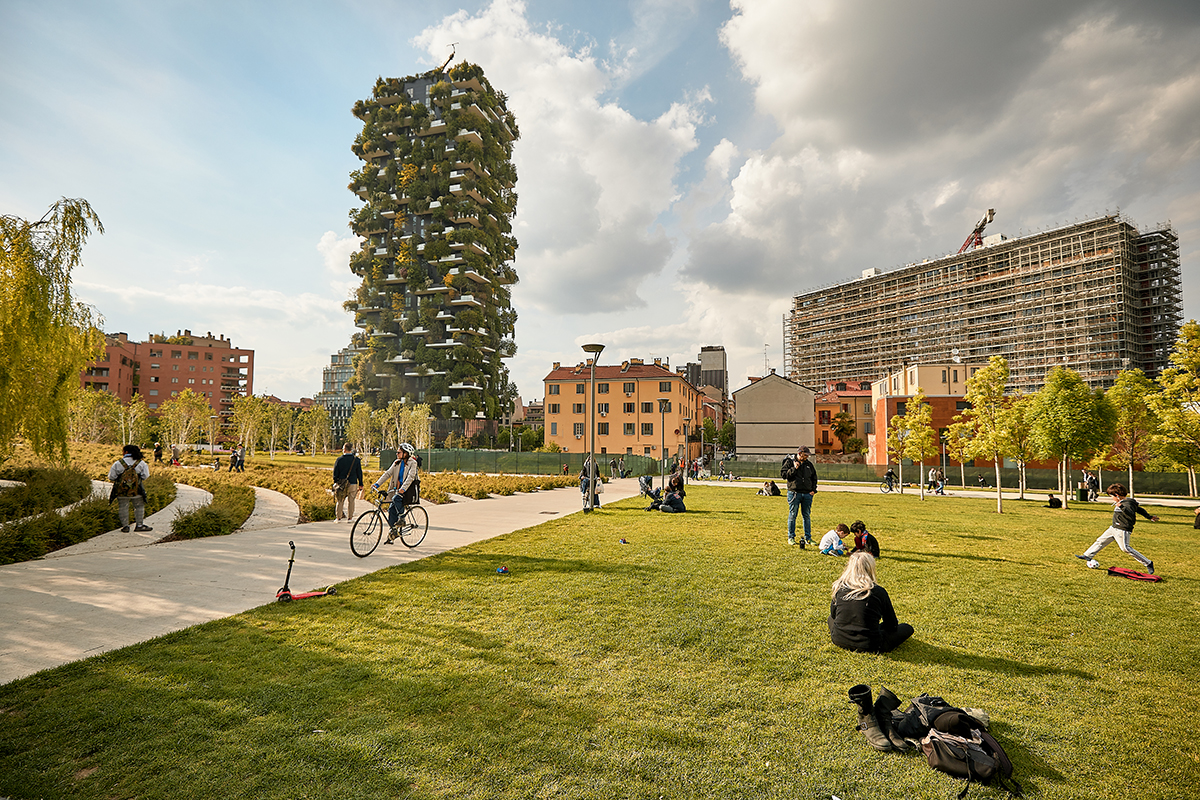
Biblioteca degli Alberi Milano (BAM), the public park in Porta Nuova
While certifications and ratings are important to measure and prove the positive impact of a project, it is vital that we do not fall into the trap of a superficial ‘box ticking’ approach to sustainability; they are not an end in themselves, they are part of a wider methodology to create a comparable standard. It comes down to all of us to show genuine leadership in the transition to the low carbon economy – passion and commitment to deliver positive social and environmental impact and transparency in reporting.
LUX: The Bosco Verticale towers in Porta Nuova have become a global icon and the face of the new more eco-friendly Milan. Do they provide a prototype of more sustainable development for other cities?
KRC: At the time the Bosco Verticale – literally vertical forest – was the first project to integrate trees on such an ambitious scale. There are 780 trees and 16,000 shrubs and plants across the two residential towers, which is equivalent to around 20,000 m2 of forest. In many ways the development gets better with age, as the trees grow and mature and the benefits to the residents multiply – from regulating the temperature of the building to enhancing mood and wellbeing. Our partner on the project, the visionary architect Stefano Boeri, is now taking the vertical forest concept to other cities, including Dubai and Eindhoven, creating a new generation of high-rise urban buildings completely covered by the leaves of trees and plants.
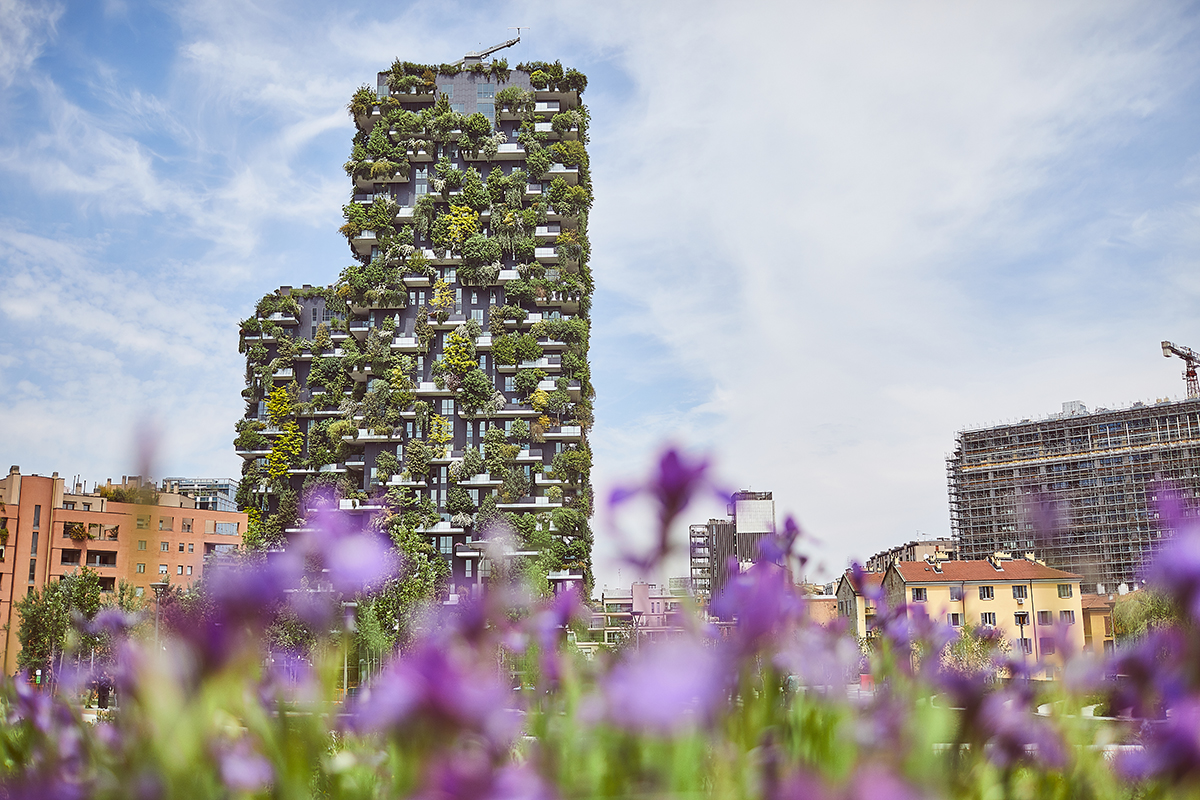
Bosco Verticale at Residenze Porta Nuova
It is now seen as a sustainable model for the future of tall buildings. Working with Diller Scofidio + Renfro and Stefano Boeri Architetti we are taking the concept further at Porta Nuova with Pirelli 39, a mixed-used project which includes the sustainable refurbishment of an existing building and the development of Torre Botanica. The buildings base is connected to the Biblioteca degli Alberi Milano (BAM) or “library of trees” – the public park and botanical garden that serves as a natural oasis and community engagement hub of Porta Nuova.
LUX: How has the public-private partnership with the Municipality of Milan been game-changer in terms of enabling a more sustainable approach?
KRC: Sustainable city making is not possible without strong partnerships. We are very fortunate to have had sensitive administrations for consecutive mandates in the Municipality of Milan that shares the vision to create a more sustainable, green city, designed around people, rather than cars. They shared our vision to make Porta Nuova a fully pedestrianised neighbourhood centred around the natural environment presented in BAM.
Through an innovative public-private partnership between the City and COIMA, the Fondazione Riccardo Catella has been responsible for the management, security, maintenance and cultural programme of the BAM since July 2019. This is the first ever public-private partnership agreement for the management of a public park in Italy and it would not have been possible without the strong long-term commitment and understanding by both parties.
LUX: What strategies for Porta Nuova have you found particularly effective at a human level to help foster a sense of community and a sustainable ecosystem?
KRC: Fundamentally, we believe in placing nature and humans at the centre of all our developments and that this approach leads to real value creation. It is important to listen to people to understand their vision for the urban space in their communities and ensure that our designs can improve their quality of life. For example, at BAM we produce a diverse programme of more than 250 cultural moments and activities each year for residents, workers, and visitors.
This has a big focus on wellbeing and has a range of activities dedicated to senior citizens. We had actually planned to suspend the outdoor program in the coldest months of January and February and resume in March. Instead the group that meets every week asked us to continue saying it was the best morning of their week because they got together, socialized, had coffee after, so of course we kept the programme running over those months.
I know it seems small but when you are managing at a neighbourhood level in the centre of a city, listening to your end user of the public space helps create a type of community which we feel will be resilient over time. This what we mean by focusing on the long-term sustainability of the entire neighbourhood, not just specific buildings. The park and the rich cultural programme work together to create a sense of community – and furthermore, with the Fondazione we would like to create a sustainable business model for this kind of public-private partnership that could be replicated in other parks in other cities across the globe.
LUX: In your approach to the development of the Olympic Village 2026 at Porta Romana, how important is sustainability including ensuring a enduring legacy?
KRC: We are working with Fondazione Milano Cortina and the Italian Government to set a very high standard regarding sustainability for the Olympic Village and we hope the legacy will become a template for a more sustainable approach to future Olympic Games (and global sporting event) development. It will also leave a positive legacy for Milan. After the Games, the village will be transformed into affordable student accommodation, with 1,700 beds, addressing a major shortage of modern student accommodation in Milan.
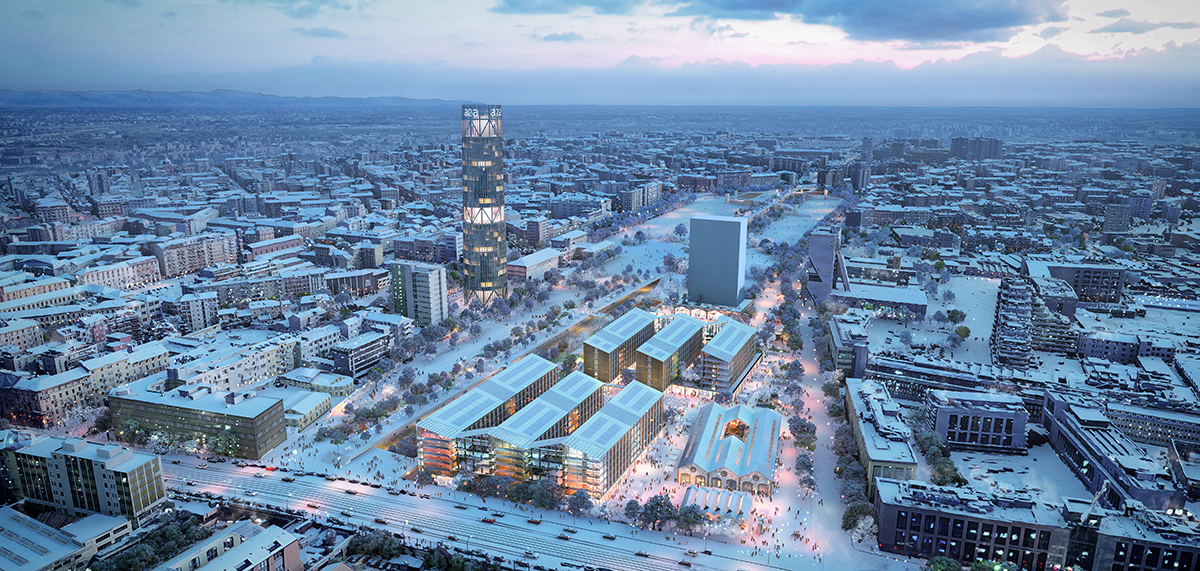
Plans for the 2026 Winter Olympic Village at Porta Romana
The student accommodation will sit within a wider urban neighbourhood including affordable housing, co-working facilities, community amenities, public spaces and parks and gardens. The Olympic Village Plaza will become a neighbourhood square, with shops, bars and restaurants at street level, and space for farmers’ markets and moments open to the community. If the Games are to be the success story that we all envision, environmental and social impact must be a driving force behind those plans.
LUX: How are you ensuring the Porta Romana project will be implemented to minimise environmental impact?
KRC: The Olympic Village itself actually only comprises only around 15% of the total investment in the regeneration of the former Porta Romana railway yard, so you can understand the scale of the project. Our vision for Porta Romana, together with the partners of the project Covivio and Prada Holding, is that the district will be grafted into the surrounding neighbourhoods, becoming a vibrant, green, sustainable and healthy place that is wholly part of the city, where work and leisure activities will be at the centre of life in the neighbourhood.
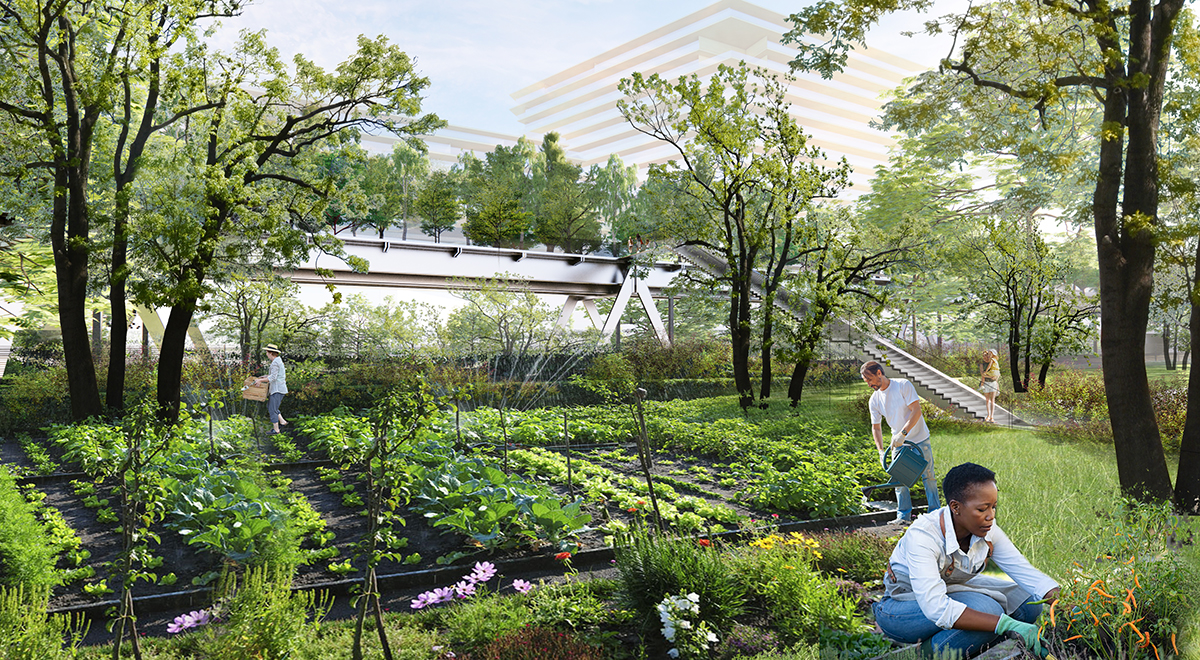
Plans for community gardening within the public park at Porta Romana
Working with the architects selected for the masterplan – Outcomist, Diller Scofido + Renfro, PLP Architecture, Carlo Ratti Associates and ARUP – and with Skidmore, Owings & Merrill (SOM), winner of the Olympic Village tender, Porta Romana is designed to have near zero environmental impact. It will also include a wide central park and gardens designed by Elizabeth Diller, the landscape designer of the New York Highline, with a ‘suspended forest’, which could become a new major tourist attraction in Milan. Altogether around half the site will be gardens or greenspace. Through this approach we are working to ensure the project sets the bar even higher in terms of sustainable urban development
LUX: How important is technology in creating sustainable neighbourhoods and communities?
KRC: Technology has a big role to play in delivering a sustainable scheme, whether through gathering and measuring the sustainability performance of the buildings or increasing community engagement and participation in initiatives on a neighbourhood level. At Porta Nuova we are piloting a ‘smart’ neighbourhood project, with an infrastructure of sensors and Internet of Things (IoT) devices capable of acquiring information in real time about the behaviour of users and their needs and the quality and performance of the infrastructure in the district.
This works alongside the Porta Nuova Milano neighbourhood app, which allows users to interact with buildings and access an extended range of services within the residential, office, retail and public spaces. The aim is to facilitate people’s lives and at the same time build the sense of community and encourage more environmentally conscious behaviour. We are also supporting a tech accelerator programme on site at Porta Nuova, called HabiSmart, with start-ups focused on transforming real estate through technology. The startups are hosted in the COIMA HQ and they are able to test their prototypes within the Porta Nuova district. This enables them to get real-time feedback from the field, accelerating the process of development and scale-up.
LUX: Is there one sustainable project you think is low cost and particularly impactful that could be scaled globally?
KRC: The built environment accounts for around 40% of global emissions. If the industry were a country, it would be the third largest emitter in the world, behind China and the US. We are in an emergency and time is running out. We now have the technology to deliver zero carbon in operations during the life of the buildings, but we need to look much more closely at the reuse of existing buildings to reduce the currently unavoidable embodied carbon emissions generated through the construction process.
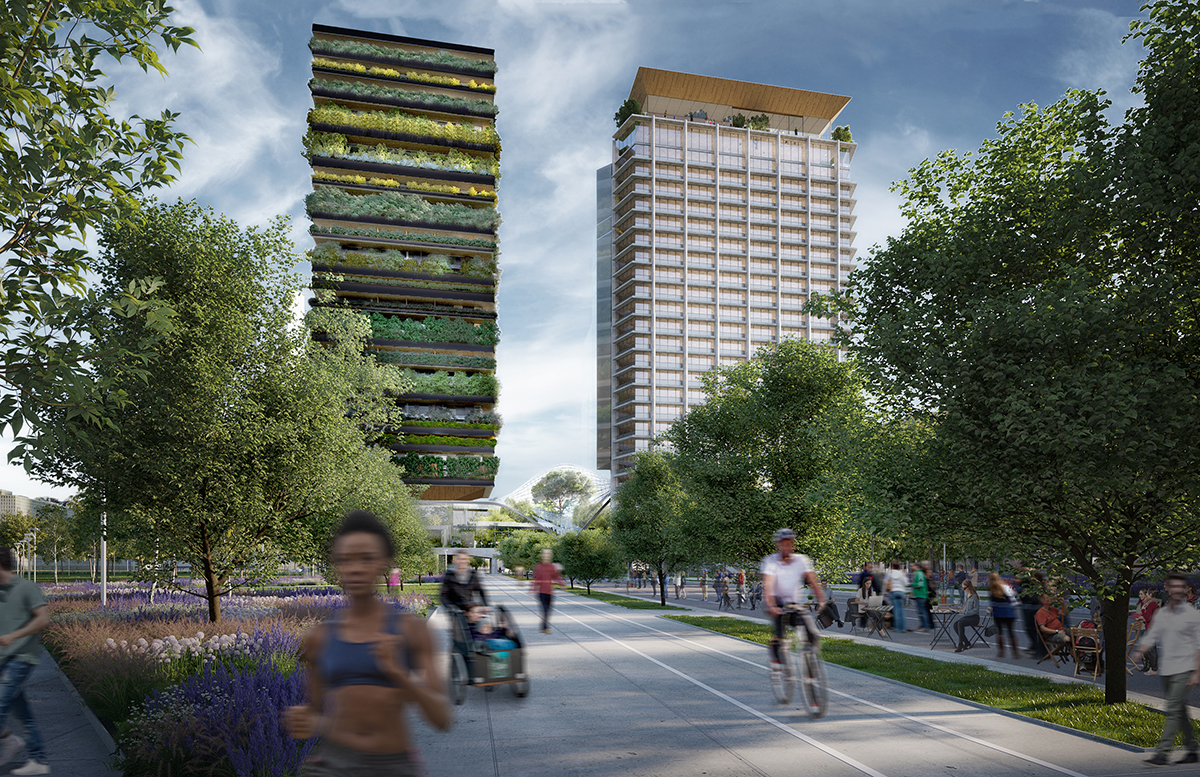
Pirelli 39, with La Torre Botanica and the Pirellino Tower
We need to change mindsets so that the first principle is to examine whether an existing building can be modernised and refurbished rather than demolished, as we are doing with the Pirelli 39 project that will see the existing 1960s Pirellino office tower refurbished to create a highly sustainable modern office building created out of the existing structure and standing next to La Torre Botanica.
Retrofit, reuse, repurposing, wherever possible, and integration of biodiversity in the urban projects is what we must all seek to do more. We need to stop viewing sustainability as an additional cost, but as integrated into the core of the business model that can mitigate risks and maintain returns long term while contributing to a healthier environment and a more cohesive social surrounding.
Find out more: www.coima.com

